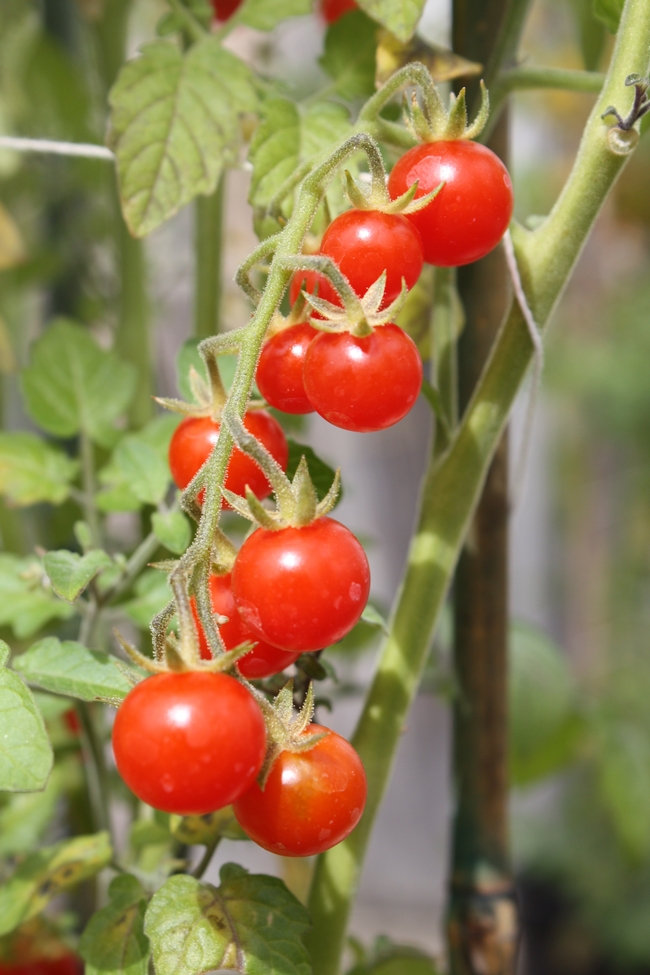I say tomato!
Here we are, a month into summer, and one of my favorite fruits is starting to emerge: Luscious tomatoes, fresh off the vine.
I know, most of us treat tomatoes like a vegetable in the kitchen, slicing and dicing them into dishes that are savory rather than sweet. Botanically speaking, tomato is a fruit because it’s developed from the ovary in the base of the flowers and contains the seeds of the plant (though cultivated forms may be seedless.)
No matter, the tomato is a nutritional powerhouse any way you cut it, loaded with vitamin C, vitamin A, potassium and lycopene, an antioxidant credited with preventing both cancer and heart disease.
The UC Davis Department of Plant Sciences devotes many resources to tomato production, helping large- and small-scale growers, organic and otherwise, control weeds, manage pests, fight disease and tackle all the other adventures farming can bring. The department is also home to the C.M. Rick Tomato Genetic Resource Center, the largest known collection of tomato seeds in the world. You can’t breed a better tomato without diversity of genetic tissues, and the repository and its abundance of wild species are the sources of resistance to 44 major tomato diseases and at least 20 insect pets – not to mention improved fruit traits like tolerance to saline conditions and drought.
Of course, growing or buying a tomato is only part of the equation. How do you make sure the fruit of your labor is tasty and safe? Here are some helpful hints from the UC Davis Postharvest Technology Center, a handy resource for all your postharvest technology needs:
How to choose: A ripe tomato will be plump, vibrant in color and fairly firm to the touch. You want it to have a little give, but not much. Ageism aside, avoid a tomato with wrinkles.
How to store: Keep tomatoes at room temperature, away from direct sunlight, with the stem scar (the belly button, if you will) facing up to reduce softening and darkening of the fruit. It’s best to eat them within two or three days, though some tomatoes are perfectly fine for about five days. Store tomatoes unwashed and then rinse them under running water before eating.
How to prepare: After rinsing your tomato well, wipe it dry and cut away the stem scar and surrounding area before slicing into it. Don’t wash tomatoes in a sink filled with water (nor use soap or detergent) because tomatoes can absorb contaminated water and soap residue through its stem scar. Cut or chopped tomatoes (and dishes like salsa) should always be covered and refrigerated if not consumed within two hours or preparation. Cut tomatoes will last one or two days in the refrigerator.
How to enjoy: Enjoy them every which way! It would be hard pick my favorite tomato recipe, but you can’t go wrong with this fast, fresh salad:
Tomato platter special
Four fresh tomatoes of any color or variety
Two red onions
Two orange, yellow or red bell peppers
A few sprigs of basil
Your favorite vinaigrette
Four ounces Feta cheese
Slice the produce into circles and fan them out on a platter in an attractive, alternating order. If you have fresh cucumbers, they fit nicely in this flower, as well. Drizzle with vinaigrette, crumble on some Feta cheese, give a few grinds of fresh pepper and few shakes of salt and place basil sprigs on top.
Delish.
You can read more tomato tips from the Postharvest Technology Center here and explore many more of their practical publications here.

